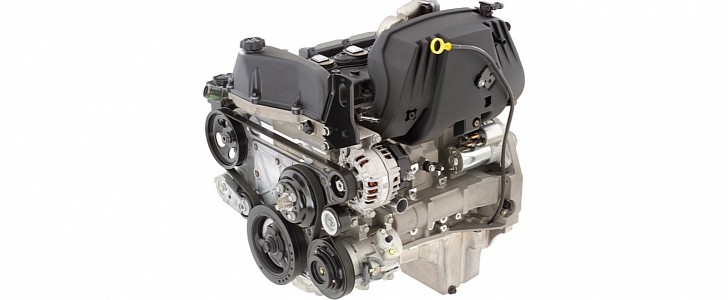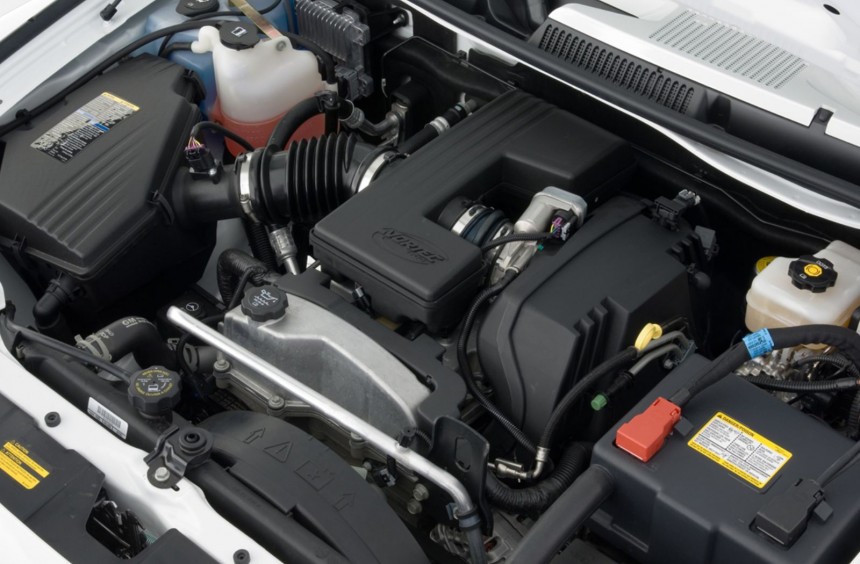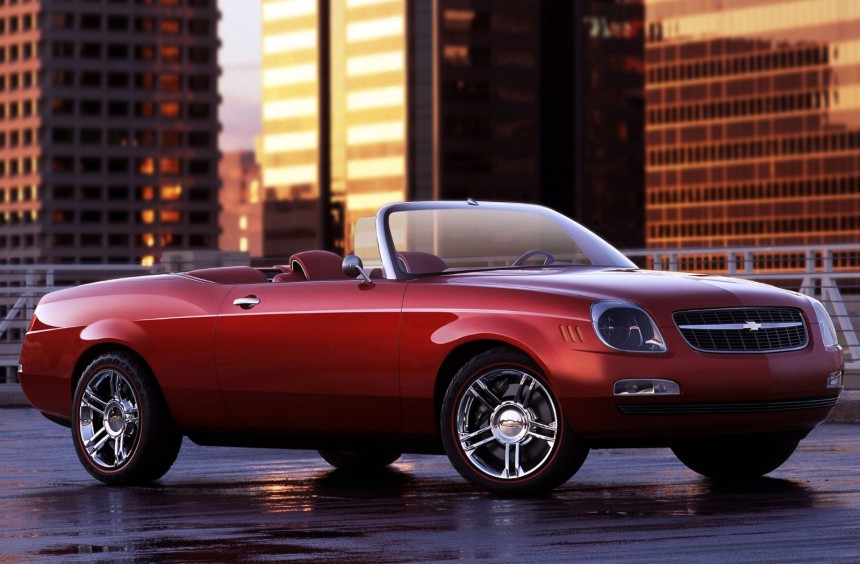First introduced two decades ago, GM’s Vortec 3500 became the first (and only) American inline-five to make it into production.
For decades, engineers have experimented with this atypical configuration in an attempt to blend the operational smoothness of an inline-six with the compact packaging of a four-cylinder. In the U.S., Ford was the first manufacturer to give this idea some serious thought back in the late 1930s, when a prototype engine was developed. Intended for a small car, the project was ultimately canned due to a lack of demand for such vehicles.
During the same period, across the Atlantic, Lancia built a five-cylinder diesel that was used in heavy-duty army trucks during the Second World War. The first engine to employ this configuration in a passenger car came in 1974, courtesy of Mercedes-Benz. Codenamed OM617, the naturally-aspirated diesel ended up powering models that were marketed in the U.S. and to this day, it’s regarded as one of the most reliable engines ever built.
Germany was also the birthplace of the first series-production gasoline inline-five. The work of Volkswagen Group engineers, the 2.1-liter debuted in the 1976 Audi 100 and reached legendary status under the hood of the quattro road and rally cars.
Like the Merc diesel, Audi’s five-pot reached U.S. shores, followed by similar engines from Honda (Acura), or Volvo but since six- and eight-cylinders were still the obvious choice from the vast majority of American buyers, domestic manufacturers steered far away from this configuration. However, as downsizing became the norm in the early 2000s, GM made the bold decision to introduce an inline-five as part of its new Atlas engine family.
The first and most enduring member of this family was the all-aluminum Vortec 4200 (or LL8). A no-nonsense, 4.2-liter, straight-six workhorse, it delivered around 270 hp to the fleet of 2002 mid-size SUVs such as the GMC Envoy, Chevrolet Trailblazer, or Oldsmobile Bravada.
At the 2002 North American International Auto Show, the company revealed a modernized Chevy Bel Air convertible concept which featured an American-built, inline-five based on the Atlas architecture. It was fitted with a virtual boost system that modified ECU parameters with a push of a button to unleash up to 315 hp. As it turns out, the concept car was a valuable testbed for the atypical engine which made its way into production two years later.
In 2004, GM introduced a new range of mid-size pickup trucks developed in cooperation with Japanese manufacturer Isuzu. Called Chevy Colorado and GMC Canyon, their standard engine was the 175-hp Vortec 2800 (or LK5) inline-four - the smallest member of the Alas family. This wasn’t a big surprise since the previous GM mid-size trucks (the S-10 and S-15) also came with inline-fours, but the lack of an optional V6 was a definitive shock. Instead, the company offered a completely new engine never before seen on a domestic vehicle.
The unusual five-cylinder called L52 Vortec 3500 (or L52) was stripped of the boost system, so power dropped to 220 hp and 225 lb-ft (305 Nm) of torque. Displacing 3.5 liters, it featured a coil-on-plug ignition system, variable valve timing on the exhaust side, electronic throttle control, and a special oil pan with a pass-through for the half shafts in 4WD models.
Although praised for its power and fuel consumption, the L52 was plagued by several reliability issues, including a serious cylinder head failure.
The powerplant was improved in 2007 when it grew to 3.7 liters and received several upgrades to its architecture. Dubbed Vortec 3700 (or LLR), its output rose to 242 hp and 242 lb-ft (328 Nm) of torque, but more importantly, the cylinder head problem that afflicted its predecessor was addressed with an updated design.
Apart from the Chevy Colorado, GMC Canyon, and Isuzu i-370 mid-size trucks, the inline-five was also found under the hood of the Hummer H3, a model that was launched in 2006 with the 3.5-liter L52 as the standard engine option.
The revised LLR was produced until 2012 when the entire Atlas engine family was retired. In the decade that followed, GM’s five-cylinder workhorse has been forgotten by many enthusiasts, but owners of vehicles equipped with this engine have nothing but praise for its reliability and decent fuel economy.
Although some call it a failed experiment, the first (and only) mass-produced American inline-five was an interesting engine, to say the least. Yes, it was far from perfect during its first years of existence, but it morphed into a solid unit after being thoroughly revised.
During the same period, across the Atlantic, Lancia built a five-cylinder diesel that was used in heavy-duty army trucks during the Second World War. The first engine to employ this configuration in a passenger car came in 1974, courtesy of Mercedes-Benz. Codenamed OM617, the naturally-aspirated diesel ended up powering models that were marketed in the U.S. and to this day, it’s regarded as one of the most reliable engines ever built.
Germany was also the birthplace of the first series-production gasoline inline-five. The work of Volkswagen Group engineers, the 2.1-liter debuted in the 1976 Audi 100 and reached legendary status under the hood of the quattro road and rally cars.
The first and most enduring member of this family was the all-aluminum Vortec 4200 (or LL8). A no-nonsense, 4.2-liter, straight-six workhorse, it delivered around 270 hp to the fleet of 2002 mid-size SUVs such as the GMC Envoy, Chevrolet Trailblazer, or Oldsmobile Bravada.
At the 2002 North American International Auto Show, the company revealed a modernized Chevy Bel Air convertible concept which featured an American-built, inline-five based on the Atlas architecture. It was fitted with a virtual boost system that modified ECU parameters with a push of a button to unleash up to 315 hp. As it turns out, the concept car was a valuable testbed for the atypical engine which made its way into production two years later.
The unusual five-cylinder called L52 Vortec 3500 (or L52) was stripped of the boost system, so power dropped to 220 hp and 225 lb-ft (305 Nm) of torque. Displacing 3.5 liters, it featured a coil-on-plug ignition system, variable valve timing on the exhaust side, electronic throttle control, and a special oil pan with a pass-through for the half shafts in 4WD models.
Although praised for its power and fuel consumption, the L52 was plagued by several reliability issues, including a serious cylinder head failure.
Apart from the Chevy Colorado, GMC Canyon, and Isuzu i-370 mid-size trucks, the inline-five was also found under the hood of the Hummer H3, a model that was launched in 2006 with the 3.5-liter L52 as the standard engine option.
The revised LLR was produced until 2012 when the entire Atlas engine family was retired. In the decade that followed, GM’s five-cylinder workhorse has been forgotten by many enthusiasts, but owners of vehicles equipped with this engine have nothing but praise for its reliability and decent fuel economy.
Although some call it a failed experiment, the first (and only) mass-produced American inline-five was an interesting engine, to say the least. Yes, it was far from perfect during its first years of existence, but it morphed into a solid unit after being thoroughly revised.












